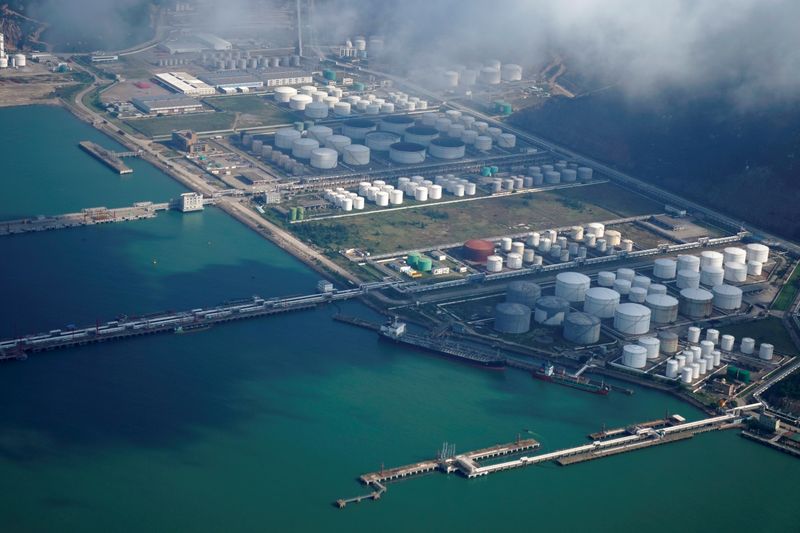By Arathy Somasekhar
(Reuters) – Oil prices rose more than 1% on Wednesday, trading near their highest since April, after industry data showed a much steeper-than-expected draw last week in crude oil inventories in the U.S., the world’s biggest fuel consumer.
futures for October rose 92 cents, or 1.1%, to $85.83 a barrel by 0001 GMT, while U.S. West Texas Intermediate crude climbed 84 cents, or 1.03%, to $82.21 a barrel.
Both benchmarks settled lower on Tuesday, breaking a three day streak of gains.
U.S. oil inventories fell by 15.4 million barrels in the week ended July 28, according to market sources citing American Petroleum Institute figures, compared with analysts’ estimates for a drop of 1.37 million barrels.
If the U.S. government figures, due later on Wednesday, matches the industry drawdown number, it would mark the largest drop in inventories according to records dating back to 1982.
Oil inventories have also begun to drop in some other regions as demand outpaces supply, which has been constrained by deep production cuts from Saudi Arabia, the de facto leader of the Organization of the Petroleum Exporting Countries (OPEC), that has provided price support.
Analysts expect Saudi Arabia to extend its voluntary oil output cut of 1 million barrels per day (bpd) for another month to include September in a meeting on Friday.
OPEC oil output fell in July on Saudi Arabia’s voluntary cut as well as an outage that curbed Nigerian supply, a Reuters survey found on Monday.
On the demand side, gasoline inventories fell by about 1.7 million barrels, according to the API data, compared with estimates for a 1.3 million barrel drop. Distillate inventories fell by about 510,000 barrels, compared with analysts estimates for a build of 112,000 barrels.
With oil prices expected to continue to rise because of the output cuts, the Biden administration has pulled an offer to buy 6 million barrels of oil for the U.S. Strategic Petroleum Reserve, an Energy Department spokesperson said on Tuesday.
Read the full article here










